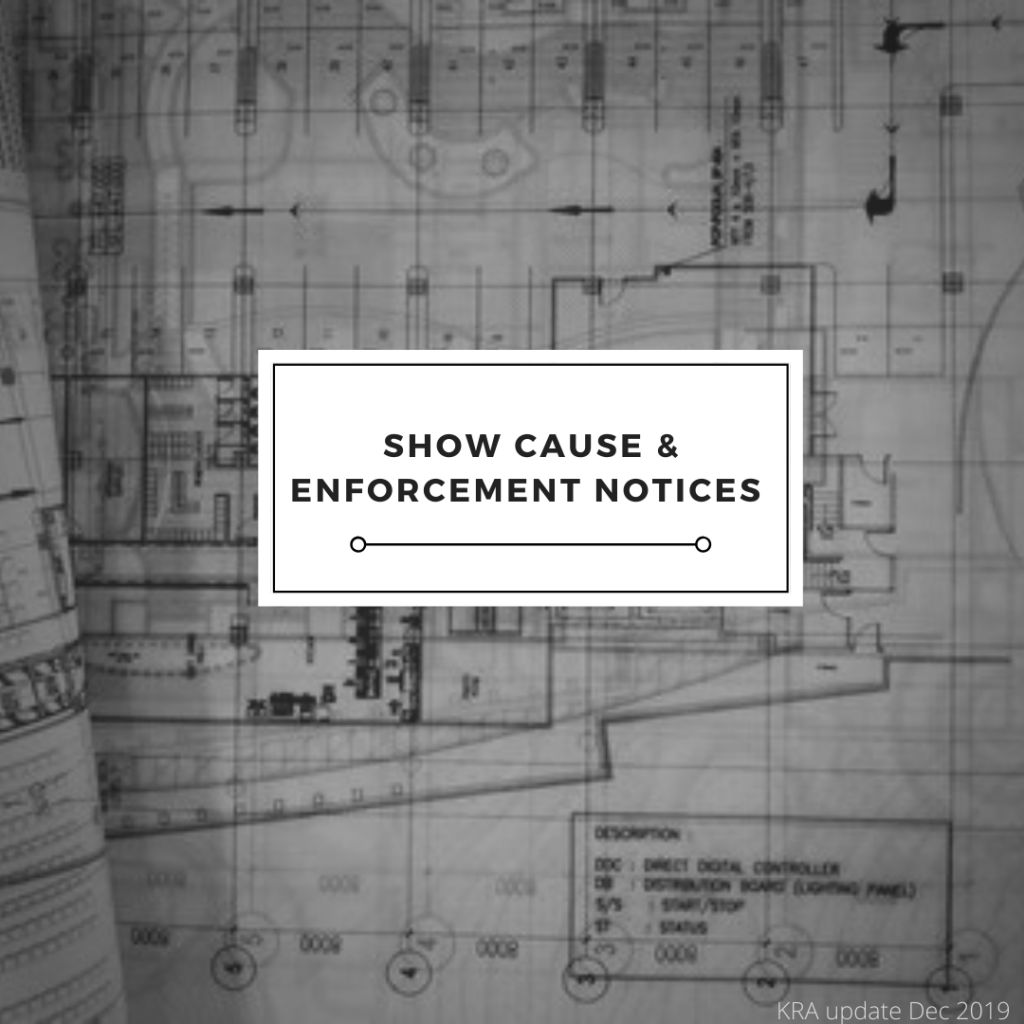In July 2019, Ken Ryan and Associates issued an industry update about the commencement of the Brisbane City Council Development Assurance Auditing Program, whereby Council sought to adopt new practices to ensure development outcomes are compliant during and after construction. This is a fundamental shift from the traditionally complaints-driven approach taken by local government authorities and increases the exposure of the industry to review and compliance costs.
We have seen recently in the South-East Queensland region an increase in compliance and regulatory matters, resulting in show cause and / or enforcement notices. Impending elections and increasingly conservative, risk-averse local governments during these times can contribute to a spike in compliance activities, or land use audits as part of proposed scheme amendments, however they may occur for a number of reasons, including –
- Uncertainty about the legitimacy of historical uses as having non-confirming existing use rights;
- Apparent cessation or abandonment of historical uses which are recommenced;
- Iterative changes / intensification of historical uses that have never been regularised; or
- Commencement of a new assessable use with no development approval.
In areas earmarked to accommodate future population growth, these issues are evident when planning scheme changes occur and the existing use is inconsistent with the intent of a new zone or precinct, or where a transition from industrial or commercial uses to residential uses is proposed. This creates tension and conflict at the interface of sensitive and non-sensitive uses and the same is true for areas designated for future industrial use where residual low density residential uses persist, both of which leads to complaints – the localities of Richlands and Wacol relevant examples.
Under the provisions of the Planning Act 2016, it is a development offence to carry out assessable development without a permit, which also includes contravening the requirements of a development permit. Two response mechanisms available to Councils are the issue of a ‘show cause’ notice or an enforcement notice. Whilst the former provides opportunity for an owner or operator to make representations to Council about the use and a timeframe within which certain actions must occur to progress resolution, Council may at its discretion proceed directly to an enforcement notice depending on the nature of the use and urgency of the circumstances. Prosecution and punitive measure may follow if matters are not resolved or progress is unnecessarily delayed, so a prompt response in good faith is important.
If you do not have a permit or do not satisfy accepted development criteria, the matter is cut and dried – you will need to obtain a Development Permit or cease operation. However, where historical uses are concerned, it is worthwhile investigating more closely, as there can be benefits of not only time and costs in avoiding a development application or relocation, but use opportunities that may unlikely be approved under current planning provisions in the case of existing non-conforming use rights.
Despite changes in the intent or provisions of a local planning scheme, the Planning Act 2016 provides for the protection of existing lawful land uses and rights, which are not compelled to cease or be changed, or be further regulated. It can therefore be critical to be able to demonstrate legitimacy. The process of unravelling these issues can be complex and obscured by the passage of time, changing legislation and incomplete records. Many in the industry believe there are specific times for cessation or abandonment, and we have extensive experience in identifying options to avoid or minimise development applications.
It is critical to consider questions such as whether approval was required when the use commenced, or if use was established without approval and has simply been operating illegally without the attention of the local authority. Remember that existing uses are not necessarily a reliable indicator of approved use! Planning and development certificates can assist to identify the scope and intensity of any existing approved uses, while review of archival resources, historical records and photographs may lend weight to legitimacy and are beneficial if refuting claims a use has been abandoned or to substantiate an intention to continue a particular use.
It is in these matters that an experienced town planner can assist. Ken Ryan has in excess of 40 years of experience in Queensland town planning in both the private and public sectors, including time spent working on Brisbane City Council’s compliance and regulatory services branch. This places our office in a unique position to understand the local government compliance process, and to develop management strategies to reach resolution that avoid enforcement actions.
If you have received a notice from Council or require advice for existing non-conforming land use matters, give Ken Ryan and Associates a call to discuss how we can assist.
For the PDF version of this post click here.

